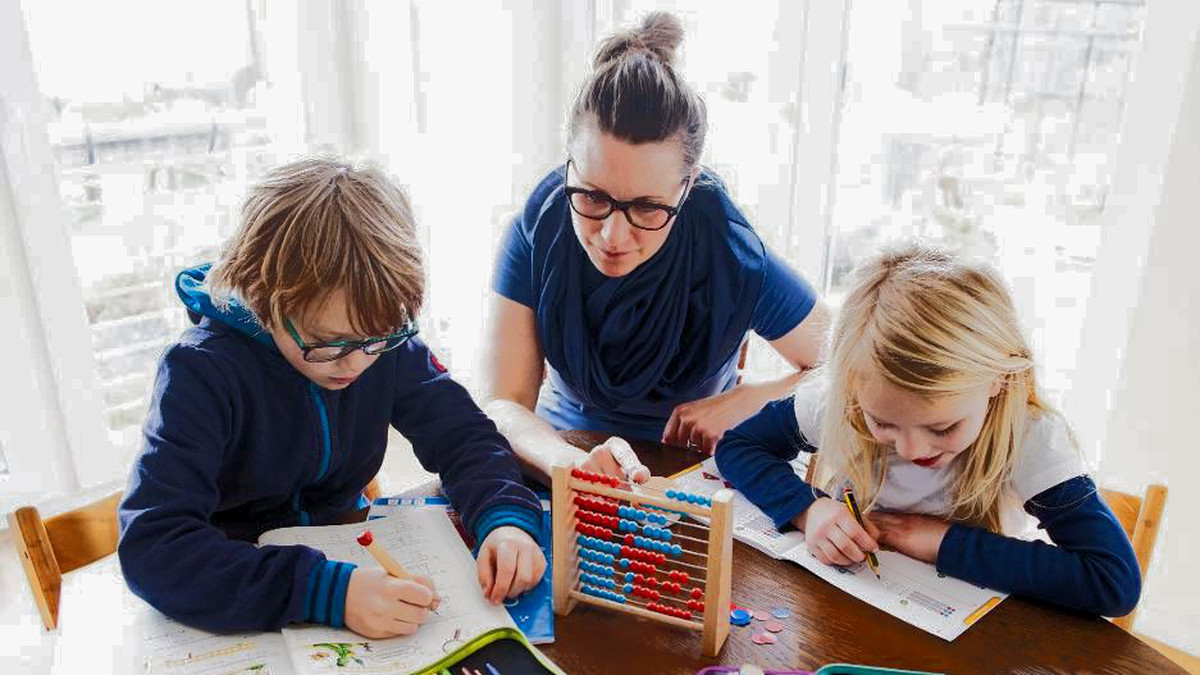As of March 17, 38 states have decided to close their public schools entirely to slow the spread of COVID-19. In total, more than 72,000 schools have closed their doors, with 38.8 million public school children affected. As more school closures are sure to follow, this has quickly become one of the most significant upheavals in American schooling.
Some states, like Illinois, have closed all K-12 school doors until the end of the month. While others, like New York, have shut down until April 20, and say that they might not reopen for the rest of the school year. Parents, teachers, and students are often left out of the loop, with no real information being given on what the expectations are during this difficult time.
As a parent to a six-year-old at one of the best public elementary schools in Georgia, I was shocked when my daughter was sent home last week with two library books and a lesson plan. The expectation was that the parents would homeschool their children. If we had any questions, the teacher would be holding “email only” office hours.
However, the information that the district is putting out versus the reality of what is happening is very different. A statement released by Cobb County School District said, “While our school buildings are closed, the education process will not stop. All staff will work remotely to best support students, including delivering digital and physical instructional resources to students while they’re at home.”
Given the news reports and press releases, I had been expecting my daughter’s teacher to host online classes, but nothing has been delivered. As of now, the burden of homeschooling falls on me, a working parent.
Schools have never experienced anything like this before. Unless they had online learning software and training already in place, they will need time to go from a physical learning environment to an online-only learning environment. My daughter’s school and thousands of others are now scrambling, trying to make the best of the situation. Caitlin Morse, a working mother of three in Illinois, says that her school is not requiring e-learning this week, but by March 30, she’s been told that e-learning lessons will be available.
Aneeka, a high school senior in California, has received little support from her school as well. “As of now, the teachers are technically not allowed to assign any homework that is due, but they will post resources and exercises on School Loop. They can’t assume that everyone has access to the Internet, so the teachers can’t do much.”
Bethany Braun-Silva, a mother who is juggling working remotely as the editor of Parenting.com, lives in New York City and says that remote learning is supposed to go into effect on March 23. Until then, “We are doing a lot of online learning, reading and hanging out. I’m also taking this time to do some activities with my kids that they don’t do in their normal school – meditate, dance, rock and roll history (haha).” But just because her children are home, doesn’t mean Braun-Silva’s work will stop. “My team and I are video conferencing and staying in touch throughout the day. We are constantly discussing the best way we can serve our audience of parents during this scary time. We created a schedule that allows me to get some work done while my children work independently. It’s definitely a change and we are gearing up to do this long term, but I have hope!”
The reality is, no schedule will be the right fit for everyone. Some working parents, like Aljolynn Sperber, are finding creative ways for their children to stay active while still working. Sperber, who lives near Seattle, Washington, is staying at home with her 11-year-old son. Following his usual morning hygiene routine, he has creative and reading time, allowing her to complete most of her calls or meetings for her business, a subscription box service for women. Sperber says, “My son will also ‘intern’ for my company by doing basic research for products to go in the subscription box, learn how to write a professional email, help pack boxes, brainstorm creative social media content, help find influencers, etc.”
Kristine Maloney, Assistant Vice President of TVP Communications, is also home with her two children in Worcester, Massachusetts, until at least April 8. She recognizes that it won’t be easy homeschooling her children, but remains hopeful that they will all find productive ways to spend their time. “The idea of an hourly schedule for kids (many of which you see circulating on Facebook) is great in theory, but really requires parents shepherding their kids from activity to activity, which is hard to do while also working. It also doesn’t work for every kid. My daughter loved it and actually did YouTube yoga and live drawing videos today on her own, trying hard to keep to a schedule of her own. But my son wanted nothing to do with it. It’s hard to watch other parents post pictures of their kids following a color-coded schedule of activities and learning and not feel inadequate. But I believe we’re truly all doing the best we can.”
Resources For Working Parents Who Are Homeschooling
Luckily, parents and schools are not going to be completely alone in this challenge. Zoom, a video conferencing software company, is offering its services to K-12 schools for free. It has been leading the charge to help students stay connected to their teachers and classrooms throughout the school closures.
Khan Academy is another great resource for students of all grade-levels. Students can find free video lessons on a variety of topics, including SAT prep, math, physics, grammar, world history, reading, and more.
Scholastic has also put together a Learn at Home website to encourage students to stay active and learning. The site will include grade-specific learning experiences that will be updated every day for free.
Parents with younger children can check out their local library. While the branches are likely closed, some libraries are offering virtual storytime with books and songs to help keep children engaged. Sesame Street and PBS Kids both have a plethora of interactive material such as games to help with phonics, colors, rhymes, and more.
This article was written by Kristen Moon from Forbes and was legally licensed through the NewsCred publisher network. Please direct all licensing questions to legal@newscred.com.
![]()



